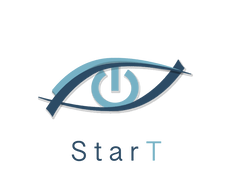ESR11: ABCA4 knockout pig as model for gene therapy in STGD1
|
Partner
Telethon Institute of Genetics and Medicine, Naples, Italy (www.telethon.it; www.tigem.it) Supervisor Prof. Dr. A. Auricchio |
Eugenio PugniMy name is Eugenio. I am from Buenos Aires, Argentina. In 2019 I finished my Biological Sciences degree (specialized in biotechnology) at Buenos Aires University. I’m passionate about scientific and technological advanced focused in human health. This is what empowered me to apply for the PhD position in the StarT project, where I’ll be working with ABCA4 knock out pigs as a model for gene therapy in Stargardt disease. I really enjoy team-work and I like to consider myself a resourceful and open person.
I successfully defended my thesis and obtained my PhD in September 2023 as part of TIGEM Human Genetics PhD program. After incredible years as MSCA StarT fellow in Italy I decided to have an experience in the clinical research field to have a complete experience in therapeutic research from cell to patient. Being part of the StarT consortium has been a very rewarding experience. The organised courses to the meetings I was able to attend thanks to this PhD program, in addition to the funding for all the projects, has given me tools to become a better scientist. Meeting field experts (and future experts) from all around the world in meetings has also consolidated a strong network of colleagues and friends for future collaborations in retinal diseases research. |
Abstract
Abca4-/- knockout mice are currently used as animal models of STGD1, but they recapitulate only some of the features of the disease, which might be due to the structure of the mouse retina, which largely differs from that of humans. The absence of an appropriate animal model severely limits both the understanding of STGD1 mechanisms as well as the testing of novel potential therapeutic strategies. Among non-primate mammals, the porcine eye shares many similarities with the human retina including anatomy, size, and a high cone/rod ratio. In addition, unlike in non-human primates or other large species, pig transgenesis is particularly advanced. ESR11 will generate a pig model of STGD1, by exploring either nuclear transfer from fibroblasts which have been genetically modified using TALEN technology in embryonic stem cells, or photoreceptor somatic gene transfer of CRISPR/Cas9 with adeno-associated viral vectors. The generation of in vivo models of STGD1 will provide unique tools for both studying the mechanism of STGD1 rod and cone cell death as well as testing new therapies including gene therapy approaches recently developed by us.
Abca4-/- knockout mice are currently used as animal models of STGD1, but they recapitulate only some of the features of the disease, which might be due to the structure of the mouse retina, which largely differs from that of humans. The absence of an appropriate animal model severely limits both the understanding of STGD1 mechanisms as well as the testing of novel potential therapeutic strategies. Among non-primate mammals, the porcine eye shares many similarities with the human retina including anatomy, size, and a high cone/rod ratio. In addition, unlike in non-human primates or other large species, pig transgenesis is particularly advanced. ESR11 will generate a pig model of STGD1, by exploring either nuclear transfer from fibroblasts which have been genetically modified using TALEN technology in embryonic stem cells, or photoreceptor somatic gene transfer of CRISPR/Cas9 with adeno-associated viral vectors. The generation of in vivo models of STGD1 will provide unique tools for both studying the mechanism of STGD1 rod and cone cell death as well as testing new therapies including gene therapy approaches recently developed by us.


